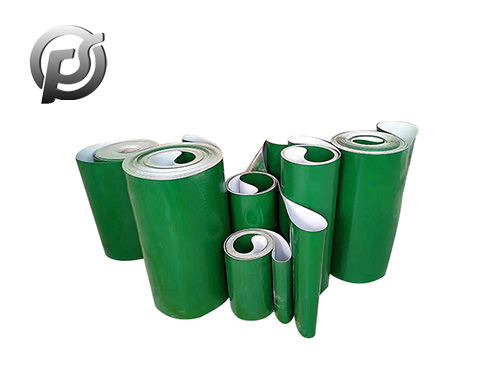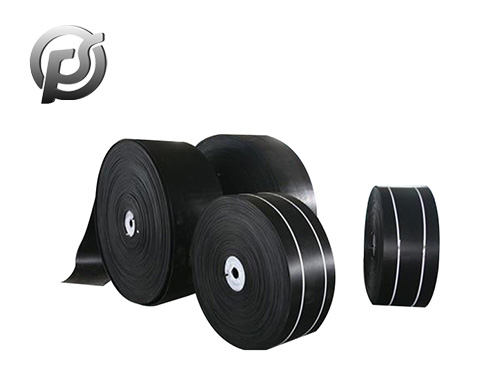(1) Installation
1, before installation should be familiar with
the conveyor drawings, according to the acceptance rules of the acceptance of the components of the whole machine.
2. Familiar with the implementation of technical requirements related to installation in the Code for Construction and Acceptance of Mechanical Equipment Installation Engineering.
3. Installation sequence:
Generally, it is: draw the center line -- install the frame (head frame -- tail frame -- support leg -- middle frame), install the roller -- install the wave guard belt -- install the electric roller -- install the reversing roller -- install the pressure belt wheel -- install the roller set -- install the tensioning device -- install the funnel, guard, guide groove, etc.
4. Installation precautions:
(1) All rollers and idlers should be flexible after installation without stuck phenomenon.
(2) The center line of the conveyor frame should coincide with the longitudinal center line of the conveyor, allowing a deviation of less than 3mm, and ensure that the straightness within any 25m length is 5mm.
(3) The parallelism between the drum axis and the horizontal plane is 1/1000 of the length of the drum axis.
(4) The perpendicularity of the roller axis to the center line of the conveyor frame is 2/1000 of the length of the roller axis. The symmetry of the roller and roller center line to the center line of the conveyor frame is 3.0mm.
5. After the cleaner is installed, the contact length between the scraper and the conveyor belt on the axis of the roller shall not be less than 85%.
(II) Test run:
1, before the formal put into use, should carry out 2 hours no-load and 8 hours load test run, before the test run in addition to the general check whether the installation of the conveyor meets the installation technical requirements, still need to check:
(1) Add lubricating oil in the electric roller according to the regulations
(2) Whether the installation direction of the reverse check is consistent with the reverse check direction.
(3) Installation of cleaner, electric drum group, reversing drum group, etc.
(4) Electrical signal and control device layout and wiring correctness.
(5) Point the driving drum and observe whether the direction of rotation of the drum is correct.
2. The following work should be carried out during the test run:
(1), check the conveyor running parts should have no obvious noise.
(2) Each bearing has no abnormal temperature rise.
(3) Check the rotation and fastening of each roller and supporting roller.
(4) The cleaning effect of the cleaner.
(5) tightness of conveyor belt.
(6) All electrical equipment buttons should be sensitive and reliable.
(III) Adjustment:
(1) When the conveyor belt at the head goes off, adjust the electric roller at the head. The direction is shown as follows. After the adjustment, weld the positioning block at the bearing seat.
(2) Deviation of conveyor belt at the tail: adjust the tail to the drum or spiral tensioning device, and weld the positioning block at the bearing seat after adjusting its direction as shown in the following figure.
(3) In the central conveyor belt deviation:
Adjust the upper idlers (for the upper branch) and the lower idlers (for the lower branch), and their adjustment directions are shown as follows. If adjusting one set of idlers is still insufficient to correct, several sets of idlers can be adjusted continuously, but the skew of each set should not be too large.
(4) The surface of the drum is bonded with materials, so that the drum becomes a conical surface, which will cause the tape to deviate to one side, causing the tape to run off. Therefore, it is necessary to check the cleaner and manual cleaning frequently.
(5) Once the belt is loaded, it will run off. This situation is generally due to the fact that the blanking point of the material is not in the middle of the belt. The blanking point position should be adjusted.
(6) When the height of both sides of the frame is not the same, the belt is not level. When running, the belt moves to the lower side, resulting in deviation. At this time, the frame must be rewelded or the idler set must be padded with gaskets.
(7) When the belt is unloaded, the empty car will run off, and the material can be corrected. This phenomenon is generally caused by too much initial tension, and the appropriate adjustment can be made.
(8) Adjust the pretension of the conveyor belt, so that when the conveyor belt starts and runs with full load, there will be no skid between the conveyor belt and electric roller.
 Stone Conveyor Belt: Enhancing Efficiency and Productivity in Material Handling
Stone Conveyor Belt: Enhancing Efficiency and Productivity in Material Handling
 Optimizing Operations with PE Conveyor Belts: Durability, Efficiency, and Versatility
Optimizing Operations with PE Conveyor Belts: Durability, Efficiency, and Versatility
 Exploring the Efficiency and Versatility of Light Conveyor Belts
Exploring the Efficiency and Versatility of Light Conveyor Belts